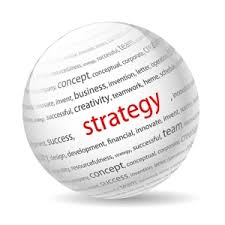B2B sales are extremely competitive, however, for early
stage and growing businesses, the buying of such services can be complex, or
more so than you may have imagined anyway.
The truth is that no matter what you’re buying, you’re
always going to have to haggle a bit. Bartering isn’t always about cost either.
It’s about getting the most value from suppliers, while paying a reasonable
amount for the value you’re offered as part of whatever service you’re buying.
To ensure you get the deserved and required value, make sure
you have the following three essentials worked into your procurement strategy.
1)
Use contract aggregation
When there’s a significant need in your business and you
assess the market to discover there’s few suppliers large enough to accommodate
what you need, it may be more effective to split your contracts into smaller
lots. One of the main advantages you get with contract aggregation is you open
the bidding process up to smaller sized business. This is particularly useful
for working with local suppliers instead of large nationals.
It doesn’t always work out cheaper, and there will be more
administration involved to oversee the contracts, however from a local economy
standpoint, partnering with local suppliers can be highly advantageous.
2)
Open pre-procurement discussions with suppliers
This one should be obvious but unfortunately it isn’t always
done. Before approaching the market for any supplies you need, research should
be done. This isn’t just a case of researching online. Get on the telephone
with representatives, go out and meet some suppliers and discuss what you need,
find out what’s available and gain first-hand insight into what the market has
to offer.
Efficiently researching the market by opening
pre-procurement discussions will let you find out a lot more about what’s
available and then use factual information to put together your written brief
for inviting proposals from potential suppliers.
The more information you have and therefore can give, the
more detailed an offering you can put out for tendering, leading to more
informative bids from suppliers.
3)
Award contracts based on quality of proposals and cost
One of the worst things you can do for your business and
customers is to accept the lowest bid from any service provider or supplier.
There are some companies that will deliberately low-ball during the bidding
process in an effort to seem competitive. Realistically though, the offer isn’t
competitive at all. What it often can be is risky. If you contract with a
supplier who provides a service at cost to them, meaning there’s no profit in
it, they are likely to deliver a substandard service. That’s something you
could definitely do without. The more obvious risk is that it won’t be
sustainable therefore you’d need to find a new supplier eventually. And
probably do some grovelling with disgruntled customers due to your suppliers’
impact on your service.
In conclusion
To drive the most value from any supplier, always engage in
pre-procurement discussions as part of your market research. If you feel
there’s a lack of sizeable firms able to accommodate your business needs, break
things down to encourage smaller or local suppliers to put their proposals
forward.
Always award your contracts based on the value you can get,
with a realistic figure attached to the offer. Never award to the cheapest
contractor, unless you’re confident and they are too that they can deliver the
service with quality and make it monetarily worthwhile to partner with your
business.
The suppliers you choose to award your contracts to will be
a stakeholder in your business so make sure they are a company you’re
comfortable working with before you engage them for the long-term duration of
the contract.



